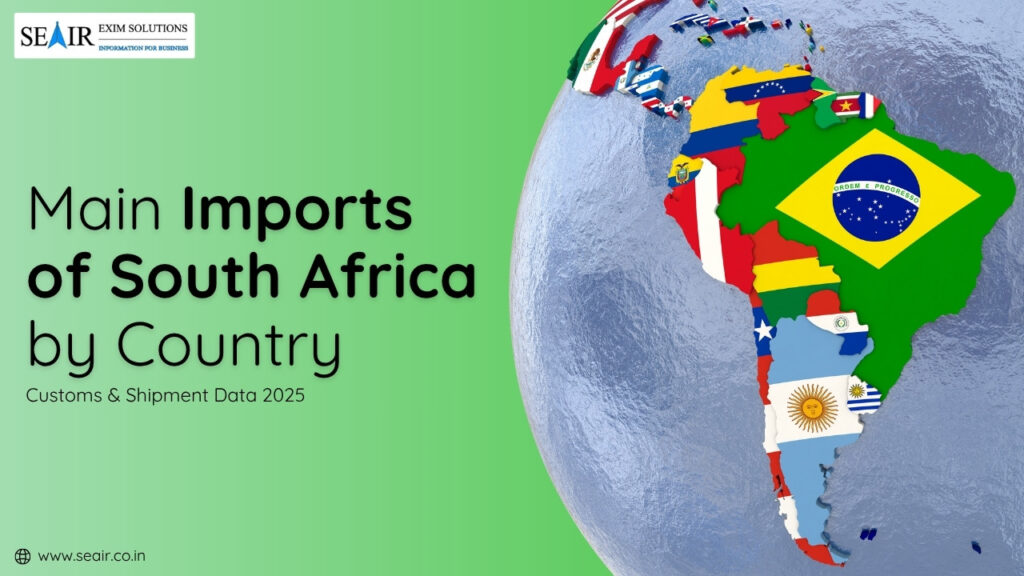
South Africa, a leading economy in Africa, continues to play a vital role in global trade. Despite economic challenges in recent years, the country remains a significant importer of essential goods that support its industrial development, infrastructure, and growing consumer demand. According to recent South Africa import data, the country imported goods worth $90.22 billion in 2025, marking a 19% year-over-year decline compared to 2024.
South Africa’s Key Imports: What Does the Nation Rely On?
South Africa’s major imports reflect the needs of its diverse and growing economy. The most imported goods include:
- Mineral Fuels and Oils
- Machinery and Mechanical Appliances
- Electrical and Electronic Equipment
- Vehicles (excluding railway/tramway)
- Plastics
- Pharmaceutical Products
These imports fuel South Africa’s manufacturing, transport, energy, healthcare, and technology sectors. Mineral fuels alone accounted for $19.61 billion, making it the top import category, followed by machinery at $12.91 billion and electronics at $9.86 billion.
Top Countries Exporting to South Africa
The main trading partners exporting to South Africa in 2025 are:
| Country | Import Value (USD Billion) |
|---|---|
| China | $21.77 |
| India | $7.32 |
| Germany | $7.10 |
| United States | $6.98 |
| Thailand | $3.21 |
| Oman | $2.97 |
| United Arab Emirates | $2.97 |
China continues to lead the chart as South Africa’s biggest import partner, exporting a wide range of goods including electronics, machinery, and consumer products.
Top Import Companies in South Africa
Several prominent companies are key players in South Africa’s import market. These include:
- Suzuki Auto South Africa Pty Ltd
- Toyota South Africa Motors Pty Ltd
- Ameropa Commodities (Pty) Ltd
- Cape Five Export SA
- FIG Distribution (Pty) Ltd
These companies are involved in sectors ranging from automotive to agro-based commodities and industrial goods.
Why Did Imports Decline in 2025?
The 19% drop in import value from 2024 to 2025 is largely attributed to slower economic growth, with South Africa’s GDP growing at a modest rate of 2.1%. A cautious domestic market, global inflation trends, and currency fluctuations also contributed to the decline.
However, the volume of imports from key partners like China, India, the U.S., and Germany remained relatively high, indicating stable trade relations and essential goods inflow.
Ports and Import Processing
South Africa’s major import gateways include:
- Durban Port
- Cape Town Port
- Port Elizabeth
Goods entering South Africa are processed by the South African Revenue Service (SARS). Importers must register with SARS, classify their goods correctly using HS Codes, obtain necessary permits, and comply with VAT and customs duties.
Final Words
South Africa’s import landscape in 2025 reflects its status as a modern, developing economy with strong ties to international markets. Despite a decline in total import value, the demand for critical products—especially in energy, manufacturing, technology, and pharmaceuticals—remains robust.
For businesses and trade analysts, staying informed with up-to-date South Africa import data, top importers, and trade regulations is essential. Platforms like Seair Exim Solutions offer comprehensive trade data, customs insights, and importer/exporter lists to help you explore opportunities and make strat




